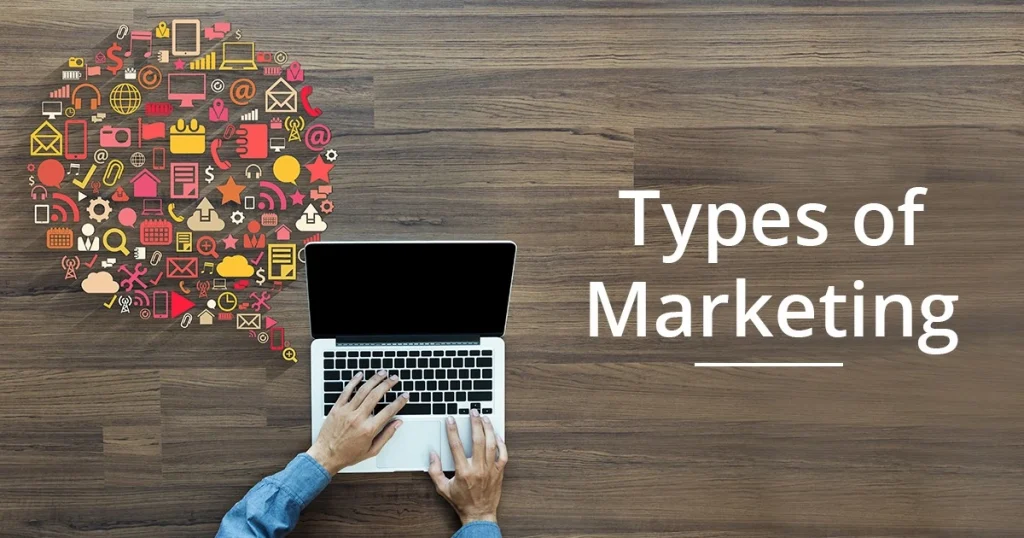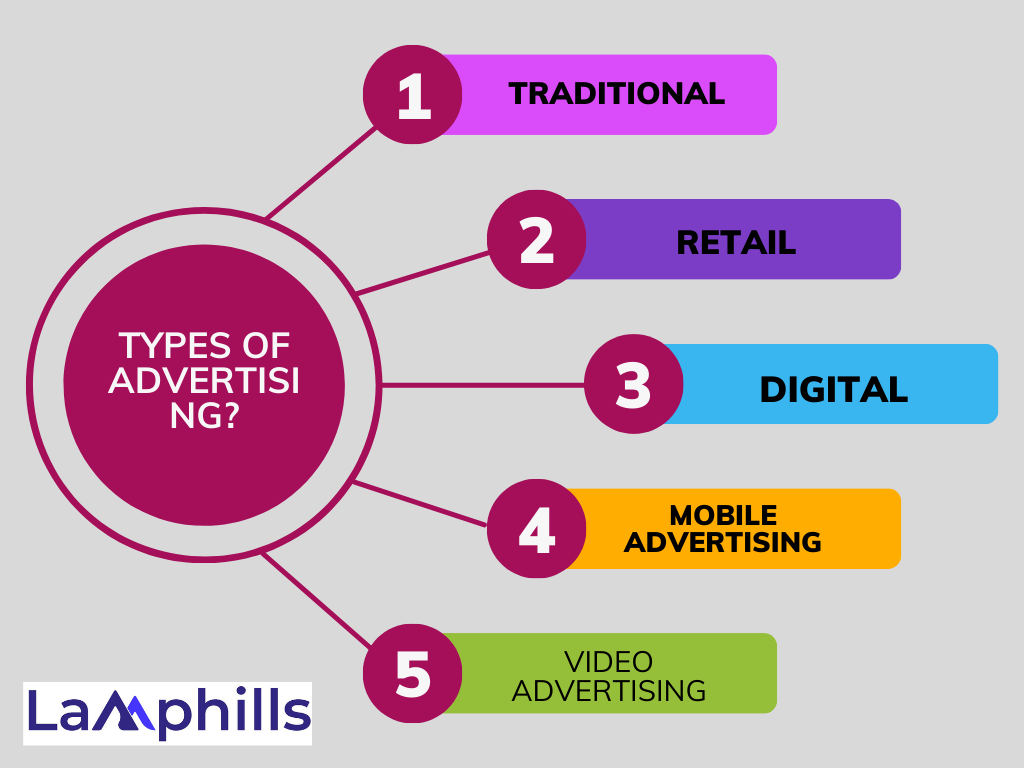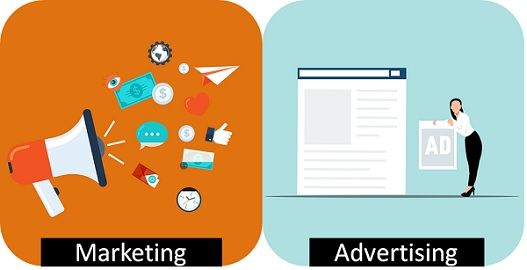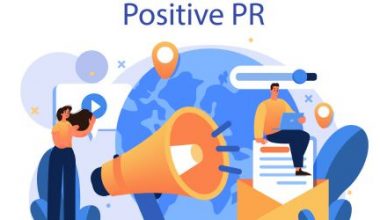Five years ago, my best friend and I decided to open and launch our coffee business as our side hustle. We understand, just like everyone else with a caffeine problem and a dream. But this was different. We’d always wanted to create a space where people could feel at home, with great coffee, comfortable chairs, and an environment that made you want to stay for hours. After much, Our coffee shop, BrewCo, became a reality.
Opening the doors was only the beginning. But we needed to figure out how to get people through those doors. At first, the distinction between marketing and advertising wasn’t noticed. This is because they all sounded the same to us, like fancy terminology employed by businesspeople to make themselves appear important. Not until we met an expert in the marketing field who after we had visited her office, with her counsel and the help of books like ‘This is Marketing’ by Seth Godin. We soon learned they were quite different—and crucial to making BrewCo successful.
This is an error of logic that confuses even the most experienced entrepreneurs. For decades, marketing and advertising have been used interchangeably, like fireworks during a product introduction. But, after we met that day, I am here to tell you that contrasting the two is an invitation to disaster.
To solve this problem, you’re welcome to my complete guide, where I’ll go deeply with the tips I received into the worlds of marketing and advertising, and how understanding the balance between these two powerhouses can genuinely turbocharge your company’s growth. So take a cup of coffee, settle down, and let us embark on this amazing journey together just like my friend and I did back then.
Key Points
- Marketing vs. Advertising are two distinct but complementary components of a successful business strategy. While marketing focuses on building relationships and driving long-term growth, advertising is more immediate, aiming to increase product visibility and drive sales.
- Integrating marketing and advertising efforts can create a powerful synergy that amplifies the impact of both. By aligning messaging and strategies across channels, businesses can create a cohesive brand experience that resonates with customers and drives results.
- Measuring success and adjusting strategies based on data insights is crucial for optimizing marketing and advertising efforts. By tracking key performance indicators and analyzing results, businesses can make informed decisions that drive continuous improvement and maximize ROI.
Understanding Marketing vs. Advertising

Do you believe “marketing” and “advertising” are synonymous? Some people use these terms interchangeably, such as marketing as advertising and vice versa. The truth is that these two conceptions are quite distinct. They are similar but not exactly the same.
As a marketer, you must understand the distinction. Aside from drawing a clear distinction in your mind, this understanding will come in handy when communicating with clients or cross-department managers who may mistake these two distinct names for the same thing.
This is why some businesses prioritize one above the other, believing it is the most effective use of resources. However, this one-dimensional approach ignores the multiple channels and touchpoints that customers utilize to interact with a business. Finally, it hinders a company’s capacity to effectively reach its target audience.
But, by explicitly defining what marketing is and how it differs from advertising, you can eventually have more fruitful conversations about the topics. This is because the more everyone understands what makes advertising and marketing unique, the more accurate and productive your meetings and initiatives will be.
Understanding Marketing

Image by ASphotofamily on Freepik
Marketing is like the beating heart of your business. It’s about having a vision, understanding your customers, and determining how to connect with them. When BrewCo started, We spent hours in coffee shops across the city, listening to what customers needed from their neighborhood café. It was difficult to listen to discussions, but that wasn’t enough, we needed to know what would set the company apart.
According to HubSpot, organizations that invest in market research are more likely to grow. So we took that bold step. This is because we wanted BrewCo to be more than just a coffee shop; we wanted it to be a place where people felt welcome. So, a mission statement was created that expressed ur principles and ensured that every one of the staff knew it by heart. This was marketing—the big-picture stuff that helped shape BrewCo’s brand identity.
This means marketing typically starts with the goal of making your target audience aware of and familiar with your brand and product. Then, marketing cultivates potential clients through online and offline marketing initiatives until they become paying customers. Then, excellent marketing entails efficient post-sale nurturing and support.
Looking at it from this perspective, it is clear that marketing encompasses more than just advertising. Even, one could argue that advertising is a subset of marketing and that it is one of, if not the most, significant marketing strategies.
After all, as we’ll see later, advertising encompasses a wide range of actions that ultimately serve the basic purpose of marketing, which is to increase your business’s visibility and attractiveness to customers to increase revenue.
But before you can consider doing anything on the advertising side, you’ll need to cover a lot of marketing activities, such as branding, market research, positioning, pricing, and the like.
How to Develop a Marketing Strategy
In our experience, I’ve seen how a comprehensive marketing strategy can create the groundwork for long-term success. By emphasizing consumer involvement and relationship-building, I’ve been able to cultivate a devoted following that returns for more.
However, establishing and implementing an effective marketing strategy looks different for each company. The first stage is to determine marketing objectives and target audiences. This information is typically included in an organization’s business plan and serves as a guide for marketing objectives and actions. Even though each organization develops its unique marketing strategy, there are a few factors that all marketers should consider.
#1. Market Orientation
A marketing strategy, like any other company plan, must be built on detailed knowledge and study. Marketers must use this information to match their activities with the company’s purpose, vision, and values.
This is because market orientation is critical for determining whether the company’s strategy should focus on product, sales, or total marketing operations. Also, market intelligence, decision-making, strategic, cultural and behavioral, and customer orientation are some of the market orientation perspectives.
#2. Marketing Environment

Any aspect that can influence a company’s marketing strategy should be considered part of the marketing environment. This covers both micro and macro settings, such as the economic environment of the operating country, the competitive environment of businesses, the technology environment, and also the political and social environment.
Read more on Marketing Environment
#4. Market Research
The attention to detail in market and user research differentiates a great firm from an ordinary one. Focusing on a customer’s qualities, creating user personas, and researching various user groups will help you determine which audiences would respond best. Furthermore, collecting regional and demographic information about target clients makes it easier to offer products and services.
#4. Marketing Mix

Image Source linkedin.com
Because marketing is a broad word, it can refer to some of the most fundamental components of starting and expanding a firm. The term “marketing mix” was first coined by Neil Borden, a world-renowned Harvard professor of marketing and advertising. Borden defines the marketing mix as a decision-making matrix for marketing decisions in any business. Initially, the marketing mix was divided into four parts:
- Product: The service or the product that your business offers that addresses the specific needs and desires of your ideal customers.
- Price: How much money customers will pay your business to receive your product or service. Price also helps dictate how profitable your business will be.
- Place: Where and how your customers can find and access your products and services, including retail or resellers, distribution, franchising, and others.
- Promotion: How your business communicates the benefits and uses of your product or service. This is where advertising comes in.
Through the years, however, the 4Ps have expanded to the 7Ps, including more parameters that are particularly relevant for those businesses that provide services and not just products:
- People: Who provides the service of your business? Every business needs to rely on qualified, competent people to deliver services to their customers.
- Process: The standard operating procedure that your people follow to show customers exactly what they receive when they purchase your service.
- Physical evidence: What tangible benefit do your customers receive as part of your service?
Also, the four Cs of marketing are a customer-centric alternative to the four Ps:
- Consumer needs
- Cost
- Convenience
- 4Communication
Types of Marketing

In addition to the various aspects of marketing, there are several types of marketing to be aware of. If you want to be a professional marketer, you can specialize in one of these fields or operate as a generalist.
#1. Search Engine Optimization (SEO)
SEO is exclusively concerned with a company’s rankings on search engines (mainly Google). This is because the higher a company’s website or web pages rank for specific keywords, the more visitors and prospective clients the site will attract. In other words, search engine optimization is a crucial component of any marketing plan, particularly in today’s competitive environment.
#2. Social Media
Businesses can also achieve great success when they use social media sites like Facebook, Twitter, and Instagram to reach their target audiences and increase sales. This is because a strong social media presence can increase brand awareness while also creating engagement and developing a stronger brand identity—but social media marketing necessitates a thorough understanding of many different social media platforms and how to utilize them effectively. This covers not only popular platforms like Facebook and Instagram but also more specialized ones such as LinkedIn. Bear in mind also that posting on these networks comprises both free marketing and paid adverts.
#3. Pay-Per-Click (PPC)
PPC is another marketing method that many firms employ to generate more leads and online traffic. Advertising is a component of digital marketing. The concept behind PPC is that businesses pay to target specific keywords, but only pay a modest fee for each click (or site visit) generated by the campaign. This can be an inexpensive strategy to reach a wider target audience online without a hefty marketing or advertising expense.
#4. Email
Email marketing is one of the most cost-effective and efficient marketing tactics, allowing firms to reach clients using only their email addresses. Companies have effectively used promotional emails, newsletters, and other gated material to attract email subscribers and increase sales. so it’s one of many marketing strategies for companies of all sizes to consider.
#5. Content
No marketing plan is complete without content marketing, which focuses on creating and publishing engaging, informative, and distinctive material to reach a certain audience just like this one. content marketing entails a wide range of material kinds, including blogs and long-form pieces, as well as white papers and social media postings.
Benefits of Marketing
Marketing is like a jack of all trades: it can accomplish a variety of things for firms depending on their requirements. All industries use marketing methods in some form or another (print, digital, face-to-face, door-to-door) to expand their customer base, promote products, and increase revenue. Other benefits include,
#1. Brand Reputation
One of the most important aspects of marketing is catching the audience’s attention. Most marketing techniques aim to provide customers with a memorable experience to keep them front of mind. This contributes to the development of a brand reputation based on quality, value delivery, and customer pleasure.
Therefore, paying attention to clients’ direct and indirect experiences with a firm is directly related to reputation management. As a result, businesses all around the world have recognized the value of a brand’s public impression and how it affects revenue.
#2. Revenue Sources
In a perfect world, all organizations would see the value of coordinating sales and marketing efforts to enhance the number of viable income streams. While sales are and should be a company’s top focus, cash generated through marketing activities boosts profits by targeting clients based on their preferences and purchasing histories.
This is why Marketers aim to increase income effectively through advertisements, campaigns, business messaging, and price reductions. Working closely with sales, and marketing teams directly contributes to lead generation, conversion, and retention to reach common corporate objectives.
#3. Customer Engagement
I’ve said it before and will say it again: organizations that prioritize customer involvement are the ones that succeed.
Marketing improves client engagement by keeping the conversation relevant. Investing in customer engagement promotes products while also giving valuable information and a sense of community.
In essence, customer engagement is an important aspect of the total customer experience since it ensures that customers understand the firm and why they should buy their products or services.
#4. Sales
When users receive the necessary information to make a purchasing decision, they are more likely to convert.
Utilizing marketing ideas is a certain approach to make clients believe they comprehend the benefits of purchasing a product or service. Simply put, the more knowledgeable consumers are, the more likely they are to convert, resulting in increased firm revenue.
#5. Goal Distribution
Every firm strives for distinct aims and objectives. Goal setting is typically the initial step in developing plans, teams, and workflows.
This means, that having a distinct marketing strategy in place allows for a clear determination of what goals the marketing team should achieve. These include raising brand exposure, sustaining reputation, reaching new clients, and adding to marketing business revenue.
What is Advertising?

Advertising, on the other hand, was a completely new ballgame for us. If marketing was BrewCo’s soul, advertising was its voice on a global scale. Because we needed to get the word out about the shop, so we got creative.
We began with social media ads because that is where everyone hangs out nowadays as the expert advised. Also, shot some fun images of our coffee shop staff and made films about how we got our beans from tiny farms in Central America. Everyone adored it! It was more than just selling coffee; it was about telling a story.
Even attempted a few billboards near the busiest areas of town. This felt like a huge jump, but we thought, “Why not?” According to a Nielsen survey from 2022, while people trust personal recommendations more than advertisements, commercials are still necessary to get on their minds. The billboards displayed basic slogans such as “Good Coffee, Good Company” and our address. Nothing elaborate, just enough to capture your eye.
So basically, advertising is a business technique in which a corporation pays to have its message or logo shown in a specific location. Businesses use advertising to offer their products and services for sale while also establishing company culture and branding.
Advertising uses channels specific to your target demographic to convey a message that persuades potential customers to buy your products or services. There are numerous kinds of advertising available today, including television commercials, radio ads, billboards, and digital advertising such as social media ads and website banner ads.
However, navigating the many advertising platforms demands keeping your target audience in mind. This is why your marketing plan insights will assist you in determining the most effective channels and ad types to use to engage and convert prospective customers into actual customers.
To be clear, advertising is an excellent tool, but it works best when combined with a bigger marketing strategy. Imagine you operate a bakery that serves the best cupcakes in town.
You could spend a fortune on eye-catching TV ads featuring your cupcakes (advertising), but if no one knows your bakery exists or what makes your cupcakes special (marketing), those ads won’t convert into sales. That’s why the magic happens when you combine marketing and advertising.
Types of Advertising?

As with marketing, advertising has developed dramatically in the twenty-first century. The digital age has provided organizations with new advertising opportunities, ranging from search engines to social media and websites of various kinds. As a result, businesses can now meet their goals and reach potential clients from almost anywhere, thanks to the widespread use of smartphones. In terms of common advertising approaches, many businesses prioritize any or all of the following methods:
#1. Traditional
This relates specifically to more “classic” forms of advertising that you might think of when you hear the term. Billboards, radio advertising, and television commercials are a few examples. These classic techniques of advertising can be extremely powerful when designed with the intended demographic in mind.
#2: Retail
Retail advertising focuses on an advertisement and its placement within a retail store. Ads may appear in a shopping cart or even at the cashier.
#3. Digital
In recent years, digital advertising has taken the world by storm, and most commercials are now digitized in some manner. In particular, digital advertising relates to the usage of banner adverts and other advertising media on websites, search engines, promotional films,
and other content. These types of ads should be responsive, meaning they can be viewed properly on both desktop and mobile devices.
#4. Mobile Advertising
Mobile advertising is when advertisers promote their content through smartphones. In-app advertisements are one common way you might see mobile advertising.
#5. Video Advertising
Advertisers often use video advertising before, after, or embedded within published video content. Online streaming services, video hosting sites, and websites might display video advertisements.
Benefits Of Advertising
Successful advertising campaigns help consumers make rational purchase decisions and empower businesses to expand their market.
#1. Customer Education
Customers are guided through their purchasing journey by showing them how to use and benefit from things. This is because customers who know more about a product make better selections and learn more about the brand.
#2. Brand Perception
Advertisements enhance clients’ perceptions of the brand and can create or break its reputation. Customers believe they can trust the company and be a part of its culture when credibility and customer loyalty are established.
#3. Product Introduction
Companies use advertising tactics to market new products or services to attract new customers and expand their customer base.
#4. Customer Retention
To retain customers, enhance return on investment, and assure client lifetime value, use techniques such as offering discounts, seasonal specials, and personalized communications.
As mentioned before, advertising can be considered a subset of marketing because all your advertising activities – including native ads, social media ads, search ads, YouTube ads, CTV ads, and even podcast ads – support your overall marketing goals.
Building Your Growth Engine: Marketing Vs. Advertising in Harmony
Here is a detailed checklist you can reference anytime
The magic happened when we figured out how to integrate marketing and advertising. This is because marketing helped us figure out who our customers were and what they cared about. Advertising, on the other hand, enabled us to approach people in ways they would notice.
I must confess, that one thing I found useful was to maintain our branding consistent across all platforms. A Lucidpress poll found that consistent branding might increase income by up to 23%. As a result, we didn’t want someone to view our billboard and then discover that our social media was a complete mess. So we made sure our logo, colors, and messaging were consistent throughout. In the end, it made BrewCo feel like a cohesive brand rather than a random coffee shop.
Alright, so we’ve established that marketing and advertising are two sides of the same growth engine coin. Now, let’s take a look at how to make them work together seamlessly.
#1. Align Your Goals
Developing a marketing plan is similar to selecting a destination for a road trip: Why, Before you can map your path of action, you must first determine your business goals. Decide what goals you want your marketing team to achieve so you can start developing a strategy to achieve them. As a result, when developing your strategy, ensure that you can track and measure your objectives. But, if you’re not sure where to begin, consider the SMART goal structure to ensure your objectives are measurable. Also, set Objectives and Key Results (OKRs) if you have many projects that contribute to a broader goal. (Marketing Vs. Advertising)
#2. Craft Your Buyer Journey
A marketing plan outlines all of the activities required to fulfill your goal. Now, the question is, what steps can you take to attain the goals you set in the previous step?
Think of your buyer’s journey as a road map that takes potential customers from awareness to advocacy. Content development, social media involvement, and email marketing are all marketing methods that nurture leads at the start of their journey, helping to create brand awareness and trust.
Then, using targeted advertising on relevant channels, you can contact potential consumers who are actively looking for solutions like yours, moving them down the conversion funnel toward a purchase. Finally, don’t forget to nurture your current consumers! Loyal fans can be your strongest brand evangelists, so keep them interested with customized email campaigns and unique offers. (Marketing Vs. Advertising)
#3. Use Marketing Data to Fuel Your Advertising
Competitive research is vital for both product development and market research. So, during your competition study, consider how similar brands and other competitors generate conversation, particularly online. Also, take note of what they are doing well and where they may improve. Use these suggestions to develop your marketing strategy.
This is because the beauty of internet marketing is the abundance of data at your fingertips. Website analytics solutions such as Google Analytics can also help you analyze your audience’s demographics, interests, and how they engage with your content. This information may then be utilized to develop highly targeted advertising campaigns, ensuring that your message reaches the correct people at the right time.
For example, suppose you own an online yoga gear store. According to website analytics, a significant amount of your website traffic originates from searches for “eco-friendly yoga clothing.” This vital information alone can then be utilized to develop targeted ads on search engines and social media platforms that include phrases such as “eco-friendly yoga pants” or “sustainable yoga wear,” drawing a more qualified audience. (Marketing Vs. Advertising)
#4: Implement Your Marketing Efforts
After you establish your goals, create your plan, and research similar markets, it’s time to put your plan into action. Consider all of the actionable steps that you have to take to implement your marketing campaign, including:.
- Who will be responsible for what tasks?
- Where will all of your completed assets go?
- How are you tracking performance?
In the end, all of the answers to these questions will help shape your marketing strategy moving forward.
#5. Embrace Experimentation
Don’t be afraid to experiment with different marketing and advertising strategies. Test different headlines, ad formats, and landing pages to see what resonates best with your audience. (Marketing Vs. Advertising)
#6: Monitor and Reiterate
Once your marketing work is implemented, the next step is to step back and look at the results. Compared to your marketing research, how is your campaign performing? Are your campaigns attributing to any new customers? Did your team hit their goals?
Connecting your marketing work to specific goals helps you decide what to reiterate for the next campaign. If you see a specific initiative that didn’t perform as well as you anticipated, adjust it for the next time or swap it out for a brand-new initiative. (Marketing Vs. Advertising)
#7. Stay Updated
In my own experience, I’ve found that it’s not enough to simply set and forget – constant monitoring and adjustment are key. By staying agile and responsive to changing market dynamics, we’ve been able to fine-tune our strategies for maximum impact and ROI. This is because the marketing landscape is constantly evolving. So, keep yourself updated on the latest trends and adapt your strategies accordingly.
In addition to the above, by combining smart marketing with targeted advertising, nurturing your audience with excellent content, and constantly optimizing your campaigns, you can create a powerful growth engine that propels your company forward and keeps it running smoothly for years to come. When it comes to marketing and advertising, get rid of the “either/or” approach. Accept them as a dynamic duo, and watch your business soar! (Marketing Vs. Advertising)
What’s the difference between Marketing Vs. Advertising?

Now that we know what marketing and advertising are and how they relate to one another, let’s look at the fundamental differences between the two. In my own business experience, I’ve witnessed personally the magic that occurs when marketing and advertising are in perfect sync. By integrating our messaging across all channels and mediums, we were been able to build a cohesive brand experience that connects with customers on a deep and meaningful level.
#1. Responsibilities
Professional marketers and advertisers have significantly varied daily job obligations. A marketer, for example, will be in charge of branding and creating consumer relationships, as well as staying current with competitors and talking with other departments about marketing objectives. Marketers must also oversee all areas of strategy and be the driving force behind it.
Advertisers, on the other hand, are more responsible for developing specific advertising campaigns, doing behavioral analysis of the campaign’s target demographic, and acquiring specific media ads (such as web ads or television commercials).
#2. (Marketing Vs. Advertising): Cost
The cost of implementing a marketing strategy will differ greatly from campaign to campaign. Because there are so many ways to pick from, the cost can range from almost free to extremely expensive. Some search engine optimization (SEO) tactics, such as keyword placement and backlinking, can be carried out at little or no expense (other than the time invested). On the other hand, some marketing methods (such as running a large social media campaign) can be quite pricey.
Advertising is similar, but the costs of an ad campaign are usually easier to foresee and manage. Advertising strategies can range from relatively inexpensive (such as PPC advertising) to very expensive (such as running a television ad during peak hours).
While the prices of marketing tactics and advertising approaches vary widely, firms must be able to forecast and manage budgets for both to thrive. This is because there is no one-size-fits-all solution for allocating marketing and advertising budgets. However, you can rely on various elements, including:
- Your target audience: Who are you trying to reach? Where do they spend their time online (or offline)?
- Your Industry: Some industries rely heavily on content marketing (e.g., professional services), while others may benefit more from paid advertising (e.g., e-commerce).
- Your Budget: Be realistic about your financial resources and allocate your budget accordingly. Don’t be afraid to start small and scale your campaigns based on results.
#3. (Marketing Vs. Advertising) : Objectives
Finally, let’s discuss measurements. How do we know if our efforts are successful? The answer is based on numbers. By measuring key performance indicators and analyzing data, we may acquire priceless insights into what works and what doesn’t, as well as where we can improve for even greater success. Marketing and advertising initiatives also have varying aims and success metrics. In marketing, for example, measurements to quantify success can include:
- Customer satisfaction
- Net promoter score
- Annual sales revenue
For an advertising campaign, on the other hand, objectives and their associated metrics tend to be narrower and may include:
- Conversion rates
- Return on ad spend
- Engagement
- Impressions
- Reach
- Open rates
#4. Marketing vs. Advertising: Scope and Timeframe
Finally, the scope and timeline for marketing and advertising vary. Marketing campaigns are typically longer and more comprehensive, incorporating a variety of approaches or methods. Advertising campaigns, on the other hand, are more focused and have extremely precise start and end dates. (Marketing Vs. Advertising)
#5. Strategies
Marketing tactics, such as inbound and content marketing, social media marketing, and SEO, are aimed at increasing consumer value. These techniques increase brand exposure, engage customers, and cultivate a devoted following. Advertising techniques aim to capture attention and generate conversions using paid and organic advertising, influencer marketing, and native advertising to achieve immediate results and improve sales. (Marketing Vs. Advertising)
Which is better marketing or advertising?
Remember that advertising is a part of marketing, so it should make sense that advertising is meant to have faster results and returns for your brand, while marketing activities are meant to be more long-term and build up your brand for the future.
Does marketing or advertising pay more?
The honest answer is neither! It turns out that marketing and advertising have a symbiotic relationship.
Does marketing require math?
From data interpretation to product positioning, maths has been a crucial domain in marketing
What is the difference between social marketing and advertising?
Social media advertising refers to paid methods (like PPC ads), and social media marketing refers to unpaid methods (like your social media posts and shares). Not all marketing is advertising, but all advertising is marketing. Advertising is a form of marketing.
Conclusion
Marketing and advertising are like a dynamic partnership in business. They each play their role but united, they are unstoppable. If you’re considering starting your own business, take the time to identify your target audience and present your story in a way that resonates. Whether it’s social media, billboards, or a smart phrase, the goal is to remain honest.
Looking back, I recognize how much marketing and advertising contributed to BrewCo’s success. During that process, we also discovered that technology is changing the game. Artificial intelligence (AI) aids in personalized marketing by allowing organizations to send targeted communications to the appropriate people at the correct time.
So that is our story. BrewCo is booming, and we could not be happier. Marketing and advertising contributed significantly, but so did the incredible people who walked through our doors and made it all worthwhile.
And there you have it: the ultimate guide to marketing vs. advertising, direct from the depths of my entrepreneurial journey with the aid of a certified marketing expert. Remember, there is no one-size-fits-all answer; it’s all about determining what works best for you and your specific business objectives. So go ahead, experiment, and don’t be scared to forge your path.
References
- .ama.org
- outbrain.com
- asana.com
- online.jwu.edu
- indeed.com






